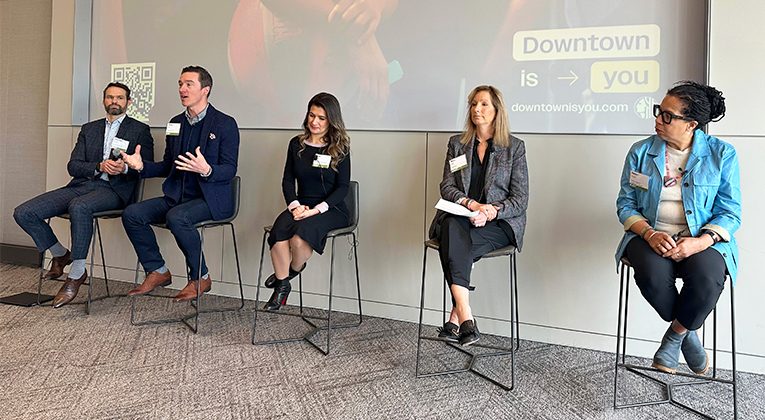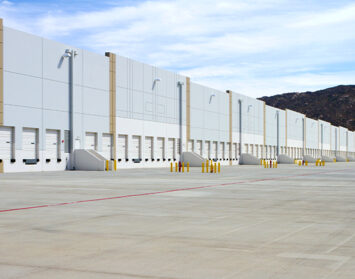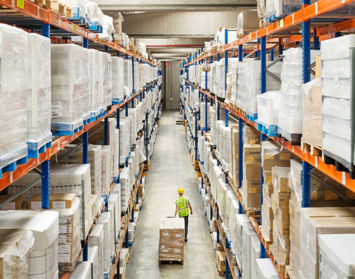Seattle’s resurgence is underway, but it requires a dedicated collaborative push from numerous stakeholders to keep the momentum going. That was the takeaway message from panelists, including Owen Rice, Executive Vice President at Hughes Marino, at a symposium called “Solutions for Downtown’s Comeback” held at University of Washington’s Foster School of Business.
The event included a keynote from Egon Terplan, Senior Fellow at the Brookings Institute, and the major theme was understanding the role of the downtown—its unique identity as a hub for business, transit and community interaction—and how to support it so that it can best serve the needs of residents, commuters, corporate tenants, and visitors alike.
It all starts with safety, Owen says—which, in turn, builds confidence in retailers and business owners to open space and establish offices, and provides incentive to workers and travelers as they decide to return to offices and frequent stores and restaurants.
“Public safety is really important,” says Owen, who represents commercial tenants in Seattle’s downtown district. “It’s a pillar of society.”
He talked about the need for the city government to not only invest in safety, but also infrastructure and incentives to ensure that the city is also vibrant and revitalized.
“To get downtown to be vibrant, you need retailers,” Owen says. “You need office tenants. You need residents in condos and apartments. And you need tourism, so people can experience what makes Seattle special. It’s a thing that compounds, and it all starts with the city investing and making it a place people want to be and visit.”
Panelist Markham McIntyre, Director of Economic Development for the City of Seattle, shared the city’s 7-point “Downtown Activation Plan” which includes safety; more affordable, lively living; unique retail; desirable work spaces; celebration of downtown arts, culture and sports scenes; making Seattle a top destination; and embracing environmental commitments.
The panelists—including Maria Royer, a Principal at Real Retail, Donna Moodie, the Chief Impact Officer of the Urban League of Metropolitan Seattle, and Olga Sagan, Founder and CEO of Piroshky Piroshky Bakery—noted that Seattle’s winning bid to host 6 FIFA World Cup games in 2026 will provide a major opportunity to reintroduce Seattle to the world.
“We want to make sure, as we are literally on the world stage for the FIFA World Cup, that when people fly in from all over to see a game here that they leave saying that it’s the coolest city with its vibrant downtown and waterfront and snow-capped peaks,” Owen says.
Adding to the city’s appeal, a massive $806M waterfront redevelopment effort which will include a new promenade, new piers, and improved connections from Pike Place Market to Seattle’s waterfront, should also be complete in time for the games.
While office occupancy is an essential part of a healthy, thriving downtown, Owen and other panelists discussed how the city needs to think beyond traditional office space to really attract a new generation of businesses and workers who are eager to reconnect, explore interesting shops and restaurants, and take advantage of the public transportation options—including ample buses and trains.
“The success of downtown—any downtown—is largely attributable to robust street-level activation,” Terplan said in his talk. “Downtowns thrive on people, retail, fun experiences, and pleasant outdoor spaces.”
If you would like to watch the University of Washington Symposium, click here to view.









